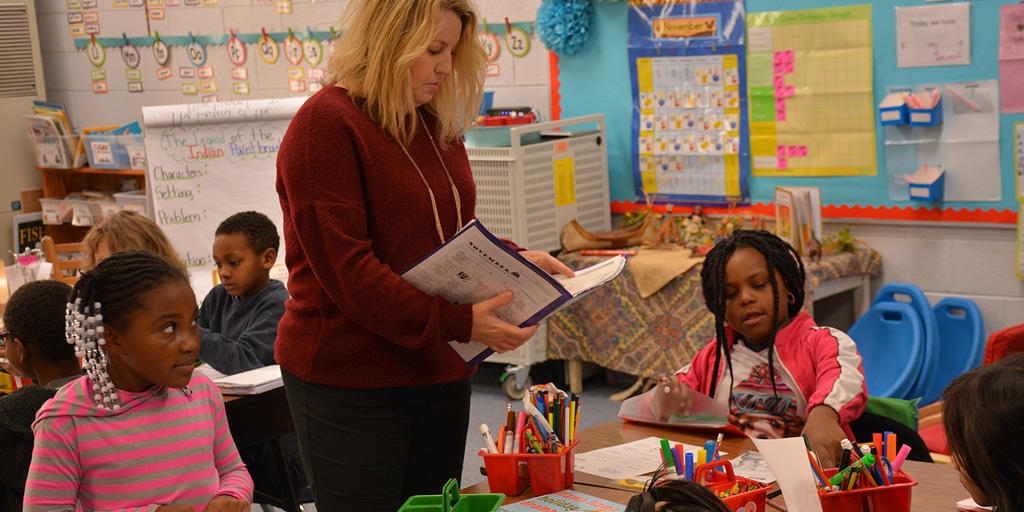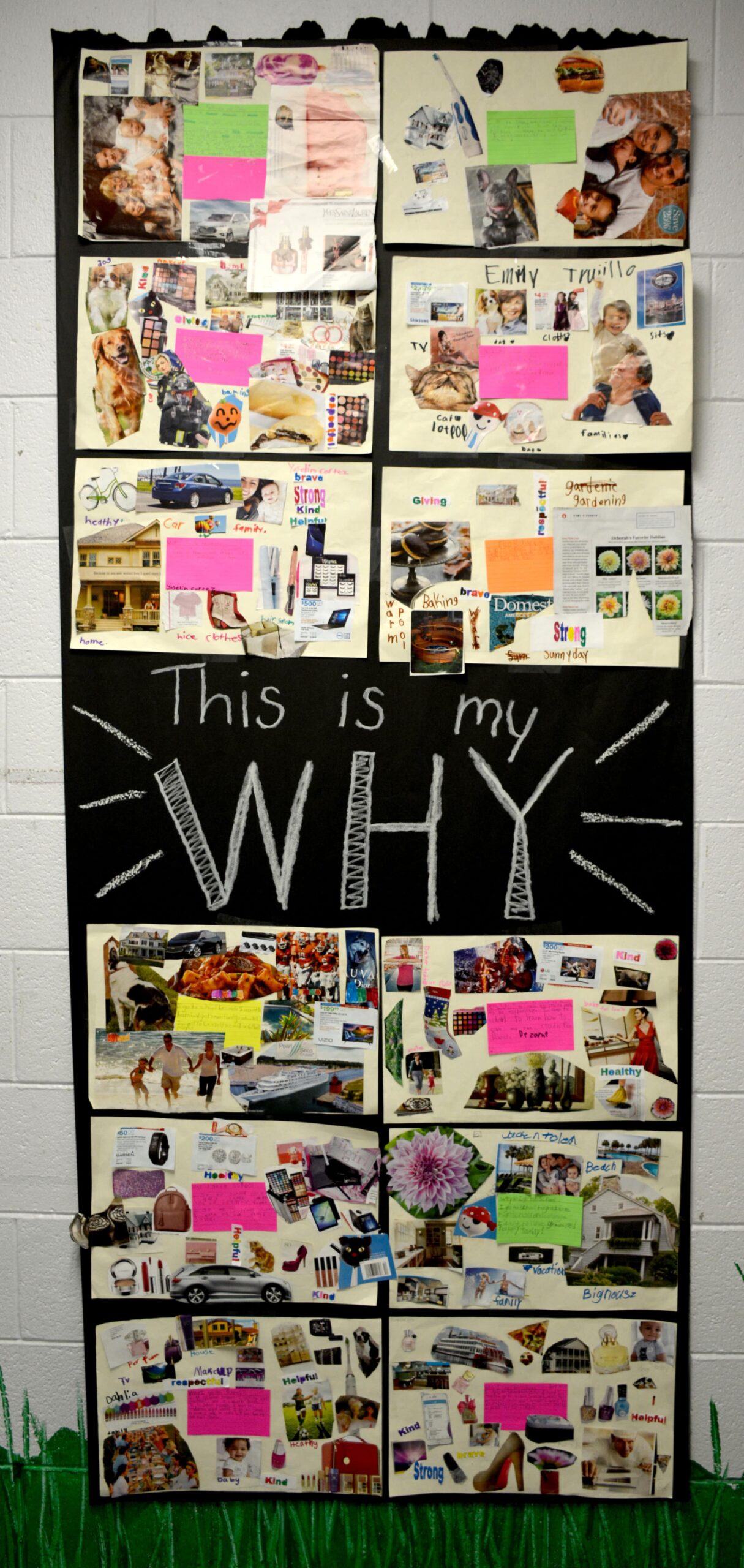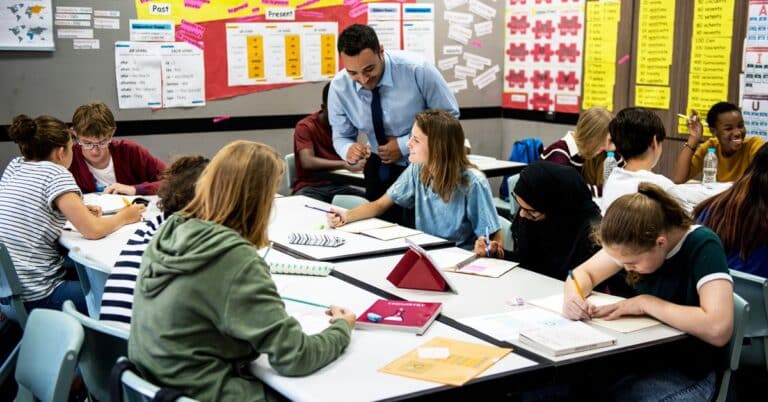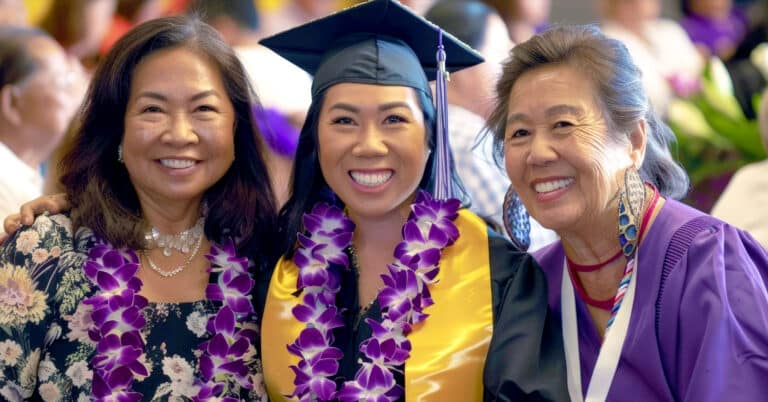Before the start of the school year, educators in Edgefield County School District were asked to consider their “why” for teaching and learning. One teacher took it a step further and asked the same thing of her students.
“It was powerful for me because being a teacher is stressful; it’s taxing physically and emotionally,” says Kelly Culpepper, a second-grade English teacher at Douglas Elementary School. “It helped me to step back and think about why I walk through this door every day for these children.”

Personalized learning begins with a student-centered culture that encourages student voice and ownership of their learning. For Culpepper, it was important for her students to think critically about why they came to school each day.
“Some of my students may not be able to see beyond their circumstances,” says Culpepper. “But when I told them my why, we started talking about what they wanted to do. Why do you come to school? Why do you do your homework? Why do you need to read twenty minutes a night? We took it beyond the classroom – do you want to go to high school? What kind of car to do you want to drive? What do you want your house to look like? It was like a light bulb came on. Their eyes began to open. They began to brainstorm what they wanted their lives to look like.”
Culpepper was especially sensitive during this exercise in providing an opportunity for her students to “dream.” She brought more than 50 magazines into her classroom, engaging her students in creating vision boards for their futures. While students eagerly chose pictures of houses and dogs and bathtubs that they wanted to have, Culpepper also made a point to have them think critically about their character, as well.
“I asked them, ‘what do you want people to say about you? Do you want to be honest? Kind? Helpful?’ I wanted a balance, to help them understand that being successful in life is not just having things,” Culpepper says.
 In addition to the vision board each student created, they also created an anchor chart for their classroom with a picture of a woman climbing a mountain.
In addition to the vision board each student created, they also created an anchor chart for their classroom with a picture of a woman climbing a mountain.
“She was holding on by a rope, at the very top of the mountain,” says Culpepper. “We talked about how right now in second grade, you’re on the rope, climbing the mountain to get to high school, to get a job or go to college. We put that picture on our anchor chart and brainstormed all of the ways we were going to get there: studying, doing our homework.”
In addition to providing her students the opportunity to dream and to think about how the little things, like turning an assignment in on time, are connected to their bigger goals, Culpepper appreciated the opportunity to get to know her students better.
“One of my students wants to be a chef. One wants to be a police officer. Another wants to be a Youtuber. I didn’t even know what that was,” Culpepper admits with a laugh. “I didn’t know any of this about them, and it created a great class environment for me and for them.”
The exercise also illuminated her students’ goals for Culpepper even more starkly, highlighting the importance of her own why to be there for her students.
“One of my students has a mother who works two jobs and her goal was to be a good mom, to go to college. She sees her mom struggle. It was deep,” Culpepper says. “It was a powerful moment to see them all take ownership of why they even walk through the second-grade classroom door.”
When we do empower our students, their potential is unleashed. See four practices teachers can implement in the classroom to help make learning more student-centered.
This was written by former Senior Manager of Communications Jillian Kuhlmann.




